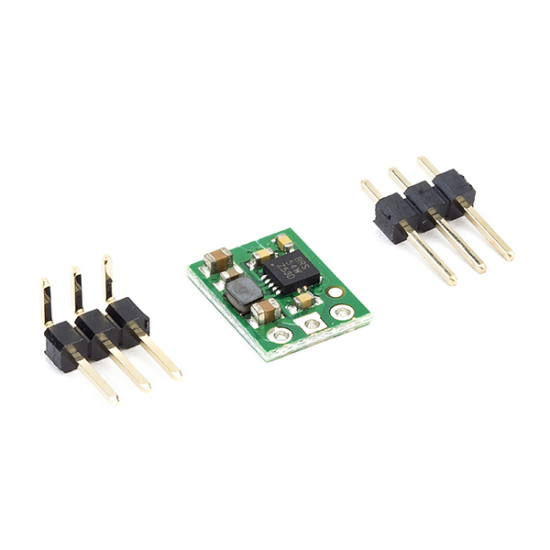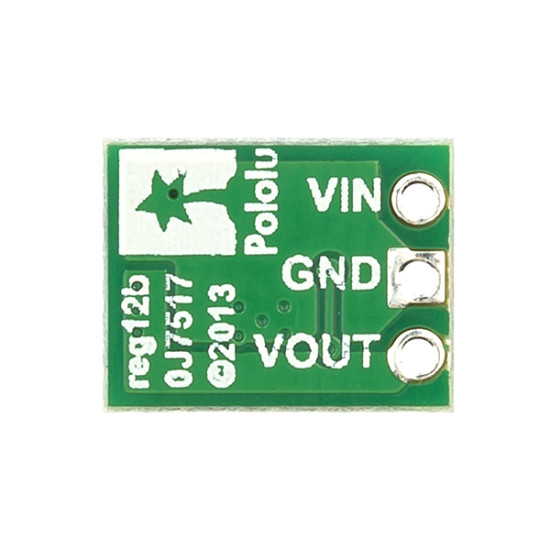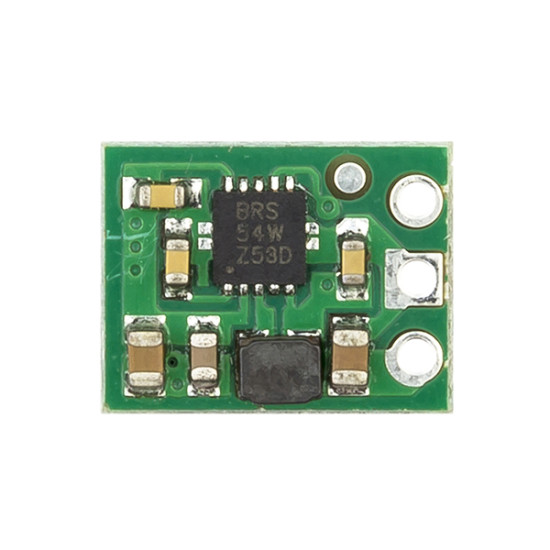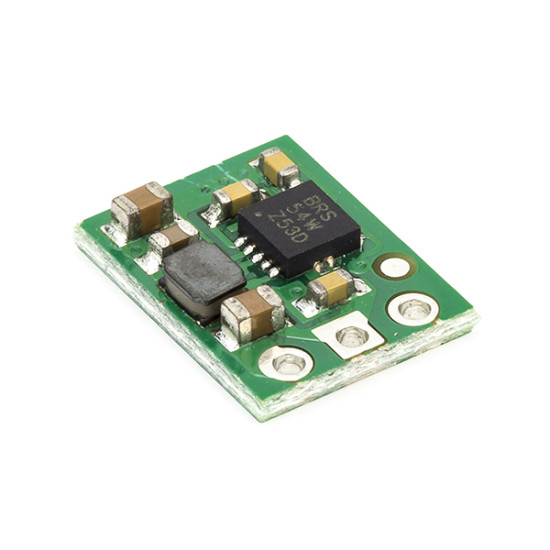







- Stock: Out Of Stock
- Brand: Pololu - USA
- Model: ROB-2638
- Weight: 0.02kg
- MPN: 2563
This 3.3 V boost (step-up) voltage regulator generates higher output voltages from input voltages as low as 0.5 V, and it also automatically switches to a linear down-regulation mode when the input voltage exceeds the output. This makes it great for powering 3.3 V electronics projects from 1 to 3 NiMH, NiCd, or alkaline cells or from a single lithium-ion cell.
When boosting, this module acts as a switching regulator (also called switched-mode power supplies (SMPS) or DC-to-DC converters) and has a typical efficiency between 65% to 85%. The available output current is a function of the input voltage, output voltage, and efficiency (see Typical Efficiency and Output Current section below), but the input current can typically be as high as 1.2 A.
The regulator’s thermal shutdown engages at around 140°C and helps prevent damage from overheating, but it does not have short-circuit or reverse-voltage protection.
Features:
- Fixed 3.3 V output with 4% accuracy
- Automatic linear down-regulation when the input voltage is greater than the output voltage
- Good efficiency at light load: <1 mA typical no-load quiescent current, though it can exceed 1 mA for very low input voltages
- Integrated over-temperature shutoff
- Small size
- Minimum operating voltage: 0.5 V
- Maximum operating voltage: 5.5 V
- Maximum input current: 1.2 A
- Output voltage: 3.3 V
- Reverse voltage protection?: No
- Maximum quiescent current: 1 mA
- Size: 0.35″ × 0.45″ × 0.1″
- Weight: 0.4 g
Using the Regulator: The boost regulator has three connections: input voltage (VIN), ground (GND), and output voltage (VOUT). The input voltage, VIN, must be at least 0.5 V for the regulator to turn on. However, once the regulator is on, the input voltage can drop as low as 0.3 V and the 3.3 V output voltage will be maintained on VOUT. Unlike standard boost regulators, this regulator has an additional linear down-regulation mode that allows it to convert input voltages as high as 5.5 V down to 3.3 V for small to moderate sized loads. When the input voltage exceeds 3.3 V, the regulator automatically switches to this down-regulation mode. The input voltage should not exceed 5.5 V. Please be wary of destructive LC spikes that might cause the input voltage to surpass 5.5 V (see below for more information).
Typical Efficiency and Output Current: The efficiency of a voltage regulator, defined as (Power out)/(Power in), is an important measure of its performance, especially when battery life or heat are concerns. As shown in the graphs below, this switching regulator typically has an efficiency of 65 to 85%.
The maximum achievable output current is approximately proportional to the ratio of the input voltage to the output voltage. If the input current exceeds the switch current limit (typically somewhere between 1.2 and 1.5 A), the output voltage will begin to drop. Additionally, the maximum output current can depend on other factors, including the ambient temperature, air flow, and heat sinking.
Resources:







